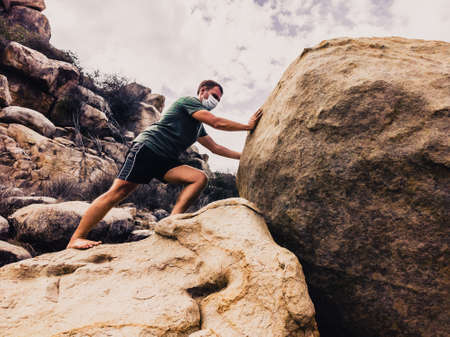Introduction: The Allure of Trail Snacks
There’s something undeniably American about the ritual of packing snacks for a trek into the wild. From the Appalachian Trail to the Rockies, trail mixes and energy bars have become essential companions for hikers, climbers, and explorers seeking both sustenance and adventure. These portable powerhouses trace their roots back to indigenous peoples and pioneers who relied on preserved nuts, dried fruits, and grains to fuel long journeys across rugged terrain. Over time, these humble provisions evolved into what we now know as trail mix—often lovingly dubbed “gorp” (Good Old Raisins and Peanuts)—and a spectrum of energy bars designed for every type of outing. Customizing your own blends isn’t just about nutrition; it’s about creating a snack that reflects your personality, taste, and the unique landscapes you traverse. In the spirit of mountain wanderers before us, crafting DIY trail mixes and bars transforms ordinary moments on the trail into rich experiences that nourish both body and soul.
Building the Perfect DIY Trail Mix
When it comes to crafting your own trail mix, striking the right balance between flavors, textures, and nutrients is an art form. Whether you’re planning a day hike in the Rockies or just need a wholesome snack for your workday, an American-inspired DIY trail mix lets you tailor every bite. Start with roasted nuts like almonds, pecans, or walnuts—these provide protein and healthy fats, echoing classic mountain provisions. Next, add dried fruits such as cranberries, cherries, or blueberries for natural sweetness and a chewy texture reminiscent of wild forest berries.
Classic American Ingredients & Mountain-Inspired Add-Ins
Trail mix traditions across the U.S. often feature local flavors and ingredients that reflect our diverse landscapes. Think of maple-glazed pecans from Vermont, California raisins, or even pumpkin seeds harvested from Midwestern farms. For that extra boost of energy and taste, toss in dark chocolate chunks or yogurt-covered pretzels—both favorites among hikers for their indulgent yet practical appeal.
Mix & Match: Creating Your Signature Blend
| Ingredient Category | Examples | Benefits |
|---|---|---|
| Nuts & Seeds | Almonds, Walnuts, Pecans, Pumpkin Seeds | Protein, Healthy Fats |
| Dried Fruits | Cranberries, Blueberries, Cherries, Raisins | Natural Sweetness, Antioxidants |
| Sweet Add-Ins | Dark Chocolate Chunks, Yogurt-Covered Pretzels | Flavor Variety, Quick Energy |
| Savory Crunch | Pretzel Bites, Roasted Chickpeas | Texture Contrast, Added Fiber |
| Spices & Extras | Cinnamon Dusting, Sea Salt Flakes | Enhanced Flavor Profile |
The Art of Proportion: Balancing Flavor and Nutrition
A well-designed trail mix is all about proportion. Aim for roughly 50% nuts and seeds for sustained energy and satiety, 30% dried fruit for natural sugars and vitamins, and 20% fun add-ins to keep things interesting on the trail—or at your desk. Don’t be afraid to experiment! Add a sprinkle of cinnamon for warmth or a pinch of sea salt to bring out sweetness and complement the savory notes. With every handful, you’ll capture the spirit of the American outdoors—one delicious bite at a time.

3. Crafting Homemade Energy Bars
Step-by-Step Guidance for Trail-Ready Energy Bars
There’s something deeply satisfying about making your own energy bars—especially when you can tailor each ingredient to your local landscape and personal taste buds. Start with a base of rolled oats, a classic for slow-release energy that keeps you moving mile after mile. Combine these with creamy nut butters like almond or peanut, sourced from local producers if possible, for protein and healthy fats that fuel endurance.
Step 1: Gather Your Ingredients
Choose regional favorites to give your bars an authentic flavor—think Oregon hazelnuts, Vermont maple syrup, or California dried apricots. Add a drizzle of local honey not only for sweetness but also to help bind everything together while supporting nearby beekeepers.
Step 2: Mix and Match Flavors
In a large mixing bowl, blend two cups of oats with half a cup of nut butter and a third cup of honey. Stir in a cup of mixed add-ins: chopped nuts, seeds, dried cranberries, or even dark chocolate chips for a Rocky Mountains-inspired treat. Add a pinch of sea salt or cinnamon to echo the flavors of your favorite trail destinations.
Step 3: Shape and Set
Press the mixture firmly into a lined baking pan. For extra cohesion, chill the pan in the fridge for at least two hours or until firm. Slice into bars sized for on-the-go snacking—perfect for tucking into your daypack before hitting the Appalachian Trail or exploring the Pacific Crest’s rugged vistas.
Trail Wisdom:
The beauty of DIY energy bars lies in their adaptability. Swap ingredients with what’s fresh and abundant near you, creating snacks that are as unique as the landscapes you love to explore. Not only do these homemade bars taste better than store-bought options, but they also offer a touch of homegrown spirit on every adventure.
Personalizing for Taste and Nutrition
When you’re crafting your own trail mixes and energy bars, the beauty is in the details—specifically, how you tailor each batch to fit your taste buds and nutritional needs. American food culture thrives on individualism, and that’s never truer than with DIY snacks. Drawing inspiration from health trends like plant-based eating, gluten-free options, and the superfood movement, you can create snacks that not only fuel your adventures but also align with your values and dietary goals.
Tips for Adjusting Recipes
- Mix Up Your Proteins: Swap peanuts for roasted chickpeas or add pumpkin seeds for a nut-free boost.
- Go Gluten-Free: Choose certified gluten-free oats or crunchy puffed quinoa for base ingredients.
- Satisfy Sweet Cravings Naturally: Use dried local fruits like Michigan cherries or California raisins instead of processed sugars.
- Add Healthy Fats: Incorporate coconut flakes, chia seeds, or almond butter for longer-lasting energy.
Superfoods to Power Up Your Mix
| Superfood | Origin | Nutritional Benefit |
|---|---|---|
| Blueberries (dried) | Maine | Antioxidants & Vitamin C |
| Pecans | Southern U.S. | Healthy fats & Fiber |
| Pumpkin Seeds | Nationwide | Zinc & Magnesium |
| Cranberries (dried) | Wisconsin | Vitamin E & Antioxidants |
Flavor Profiles to Try
- Southwest Spice: Add chili-lime seasoning and roasted corn nuts for a zesty kick.
- Tropical Vibes: Mix in mango, pineapple, and coconut chips for a beachy escape—even if you’re just hiking the Rockies.
Customizing for Dietary Needs
If you’re watching sugar intake, sweeten bars with mashed banana or unsweetened applesauce. For vegan friends, stick with maple syrup or agave instead of honey. The key? Think local, think seasonal, and don’t be afraid to experiment. That’s the spirit of American trail food: ruggedly personal, always evolving, and made for the open road—or trail.
5. Trail-Tested Storage and Packing Tips
When youre crafting your own trail mixes and energy bars, smart storage is just as important as the recipe itself—especially if you want those snacks to stay fresh from the first mile in Yellowstone to your last step on an Appalachian day hike. Here’s how to keep your homemade fuel tasting great and ready for any adventure.
Choose the Right Containers
Opt for reusable, lightweight containers that seal tightly. Silicone snack bags, locking plastic tubs, or sturdy zip-top bags are all trail favorites. For long hikes or multi-day treks, vacuum-sealed bags can help prevent staleness and protect against humidity—no one wants a soggy granola bar halfway through a summit push.
Portion Out Your Snacks
Pre-portioning your trail mix or bars into single-serving packs makes life easier on the move. Not only does it help with rationing (so you don’t eat all your chocolate-covered almonds at once), but it also keeps everything clean and avoids unnecessary handling on the trail.
Keep It Cool and Dry
If your snacks include chocolate, nut butters, or dried fruit, store them in a cool section of your pack, away from direct sun. Consider tossing in a small silica gel packet (the kind found in new shoes) for extra moisture protection—just be sure it never comes into contact with your food directly.
Mind the Miles: Durability Matters
DIY energy bars tend to be a bit softer than store-bought versions. To keep them intact, wrap each bar individually in parchment paper or wax paper before placing them in a hard-sided container. This prevents melting and crumbling during long stretches over rocky terrain or bumpy forest trails.
Zero-Waste on the Go
If you’re aiming for Leave No Trace adventures, pack out all wrappers and consider using washable pouches or beeswax wraps instead of single-use plastics. This not only preserves the landscape you love but also streamlines your pack with reusable solutions that can last season after season.
With these packing strategies, your custom snacks will go wherever you roam—fresh, unbroken, and bursting with flavor—so you can focus on the views and the journey ahead.
6. Sharing the Adventure: Community and Snack Swaps
Out on the trail, a special kind of camaraderie develops with every mile—and nothing brings hikers together quite like sharing snacks. DIY trail mixes and homemade energy bars aren’t just fuel for your journey; they’re tokens of friendship, generosity, and a shared spirit of adventure.
Tradition of Swapping Snacks
In American hiking culture, it’s almost a rite of passage to swap a handful of your signature trail mix or offer up a homemade bar at a rest stop. Maybe you’ve packed a spicy southwest blend or a classic peanut butter oat bar; your trail buddy might have brought dried cherries from Michigan or smoky pecans from the South. Each exchange is an invitation to taste new flavors and hear stories behind each recipe—a true flavor memory in the making.
Building Outdoor Connections
Snack swaps are more than just practical—they help build lasting connections in the great outdoors. Passing around your favorite creations fosters trust, conversation, and laughter as you compare notes on ingredients or debate the merits of sweet versus savory blends. These small acts create a sense of community that lasts long after the hike ends.
Collecting Flavor Memories
Every swapped snack is a memory: the tangy burst of homemade citrus chews during a sunrise summit, the comforting crunch of chocolate almond clusters shared around a campfire. Over time, these shared treats become part of your collective outdoor story—a reminder that adventures are sweeter when flavors (and friendships) are exchanged.
So next time you hit the trail, pack extra and don’t be shy about sharing. Your DIY snacks could spark new conversations, inspire someone’s next recipe, or simply create another unforgettable moment in America’s wild places.


